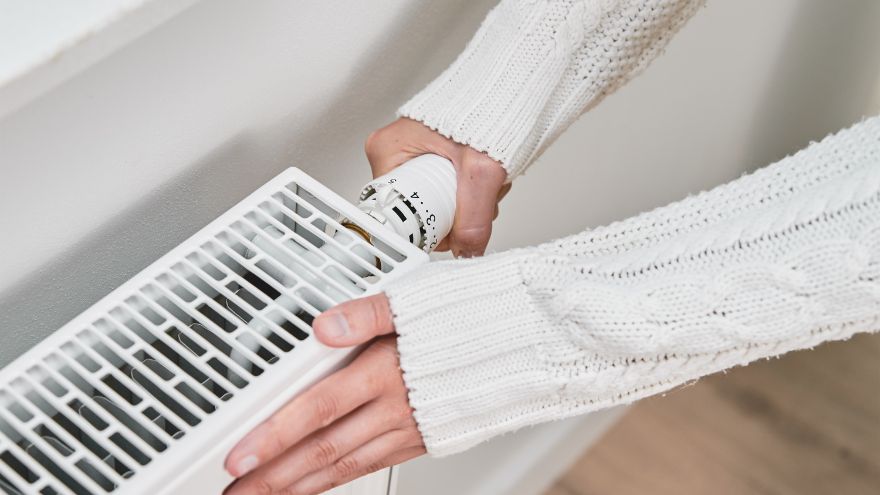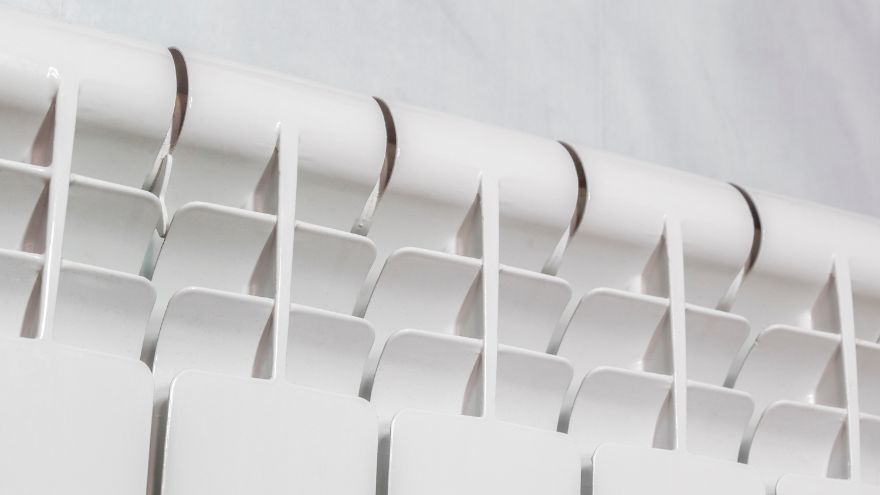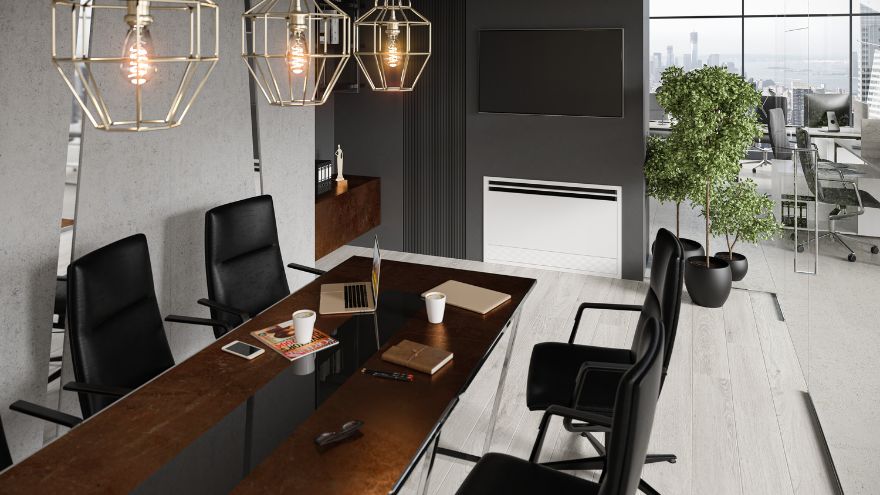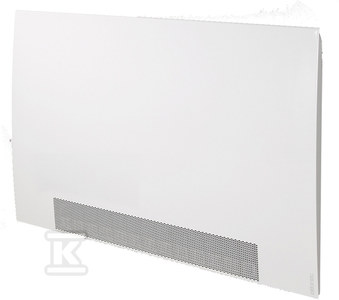Heat pumps are quickly gaining popularity as a heating source for home and business. They offer low operating costs and high thermal comfort, and their operation has a relatively small impact on the natural environment. What radiators are best combined with them? What should you consider when choosing? We advise, we suggest, we explain!

Heat pump and radiators - is it a good choice?
It is common to associate heat pumps with water surface heating, mainly the so-called "underfloor heating" . This is a common, even recommended tandem, but nothing prevents the thermal energy generated by the pump from being distributed throughout the house using more conventional methods, including radiators. When choosing the most simplified and economical option, or modernizing an existing home heating system that previously used cast iron fin radiators or old steel radiators, you can use classic panel radiators . They are often a replacement for the once popular cast iron "radiators", and even have the same connection spacing at a certain height. All this in order to simplify the thermal modernization process - if it is possible to replace radiators by dismantling the old ones and installing new ones in the same places, without forging and time-consuming reconstructions , it is worth considering using this option.
Panel radiators - horizontal or vertical - properly selected in terms of heating power (ability to release heat energy into the room), taking into account the temperature of the supply and return liquid, will also work well in newly built heating systems, although such a combination is no longer required. Of course, when powering the installation with a heat pump, higher power and more efficient radiators will be necessary to prevent the room from underheating. This is due to the fact that under optimal operating conditions, the most popular type of heat pump generates a feed medium with a much lower temperature than a gas boiler or a pellet or eco-pea coal stove . Therefore, the heat pump-plate radiator tandem should be treated as a solution mainly in situations when the heat source is replaced in an existing and heated building (e.g. from a boiler to a pump) and it is important to adapt it to new conditions relatively easily and at low cost. conditions. Sometimes it will be necessary to move radiators between rooms, sometimes it may be necessary to purchase individual pieces with higher power. But we can still rely on the existing installation, without making a radical renovation involving a complete replacement of the existing installation.
Low temperature radiators
 Where it is not possible to use surface heating, which is optimal in combination with a heat pump , other types of radiators will work, structurally better adapted to work with low-temperature heat sources, such as heat pumps, in which high-temperature heat-generating processes do not occur. , and therefore, first of all, combustion. Such a radiator emits heat more effectively, the pump providing less of it than the boiler, and at the same time it maintains compact dimensions, comparable to panel radiators in traditional systems. It is worth mentioning radiators with fans that support the natural convection process and radically increase the ability to emit heat into the room.
Where it is not possible to use surface heating, which is optimal in combination with a heat pump , other types of radiators will work, structurally better adapted to work with low-temperature heat sources, such as heat pumps, in which high-temperature heat-generating processes do not occur. , and therefore, first of all, combustion. Such a radiator emits heat more effectively, the pump providing less of it than the boiler, and at the same time it maintains compact dimensions, comparable to panel radiators in traditional systems. It is worth mentioning radiators with fans that support the natural convection process and radically increase the ability to emit heat into the room.
The choice of a radiator for use with a heat pump depends mainly on the user's preferences and the available options in a given building or room, because the heat pump itself, as the heart of the heating system, offers many variants of receiving devices . It can work with both surface heating (floor or wall) and radiators with forced convection, including channel radiators and finally, under certain conditions, also panel radiators. It is also worth considering a relatively new and increasingly popular option, fan coil units, which allow you to combine the heating and cooling functions in one device, powered by a dual-function heat/cooling pump.
Check out the offer of radiators at the Onninen wholesaler
Fan coil units with cooling function
 Fan coil units have all the makings of becoming a hit on the heating products market. If you can completely eliminate air conditioning as a separate set of devices installed in a house or commercial building, and combine it entirely with the heating system, a potentially ideal solution emerges. Air conditioners are energy-intensive, require service and space, while a fan coil is a 2-in-1 device, i.e. a heater in winter and an air conditioner in summer. Whether heating or cooling, it is always powered by a heat pump, saving everything possible - energy, space and operating costs.
Fan coil units have all the makings of becoming a hit on the heating products market. If you can completely eliminate air conditioning as a separate set of devices installed in a house or commercial building, and combine it entirely with the heating system, a potentially ideal solution emerges. Air conditioners are energy-intensive, require service and space, while a fan coil is a 2-in-1 device, i.e. a heater in winter and an air conditioner in summer. Whether heating or cooling, it is always powered by a heat pump, saving everything possible - energy, space and operating costs.
The list of advantages also includes the flexibility of these devices in terms of place and method of installation. They can be hung on walls like conventional radiators, embedded in walls or suspended from ceilings like air conditioners. This last solution may not be optimal from the point of view of heating (the heat tends to stay at the top of the room anyway, and such a location facilitates the creation of "cushions" under the ceilings), but if the fan coil unit is to function primarily as an "air conditioner" (in in such a case, the ceiling installation promotes air circulation), and in cold periods only support other types of heating (e.g. surface heating), it seems to be quite a good idea.
As you can see, the market sun is not going to set on radiators as such. The functionality of radiators will gradually change and expand (examples include models with fans or fan coil units), but it is not certain that underfloor heating will replace them once and for all, and it certainly will not happen in the foreseeable future. It's like with cars - electric ones are gaining popularity, but it will take a long time before those powered by regular combustion engines finally catch up. We invite you to a short review of the most popular and recommended products!
Radiators and fan coils in the offer of the Onninen wholesaler
Purmo CV22 radiator
The Purmo CV22 radiator is a classic of the genre. It is equipped with two convectors and two heating plates, and is made of high-quality low-carbon steel.
Purmo CV33 radiator
The Purmo CV33 radiator is a product similar to the one above, but the number of convectors and heating plates is three each.
Purmo Vido S2 fan coil unit
The Purmo Vido S2 fan coil unit is a solution that heats in winter and cools in summer. It is very flexible in terms of mounting location.
Atlantic Panama fan coil heater
 The Atlantic Panama fan coil heater is a modern solution that will work well in homes, companies, hotels and offices. One device that serves as a heater in winter and an air conditioner in summer, powered by a heat/cool pump, may turn out to be the future of the heating market.
The Atlantic Panama fan coil heater is a modern solution that will work well in homes, companies, hotels and offices. One device that serves as a heater in winter and an air conditioner in summer, powered by a heat/cool pump, may turn out to be the future of the heating market.
Purmo Aquilo trench heater
The Purmo Aquilo trench radiator is a link connecting surface heating systems with hanging radiators. Thanks to the fans, it enhances the convection process, heating the rooms more effectively.